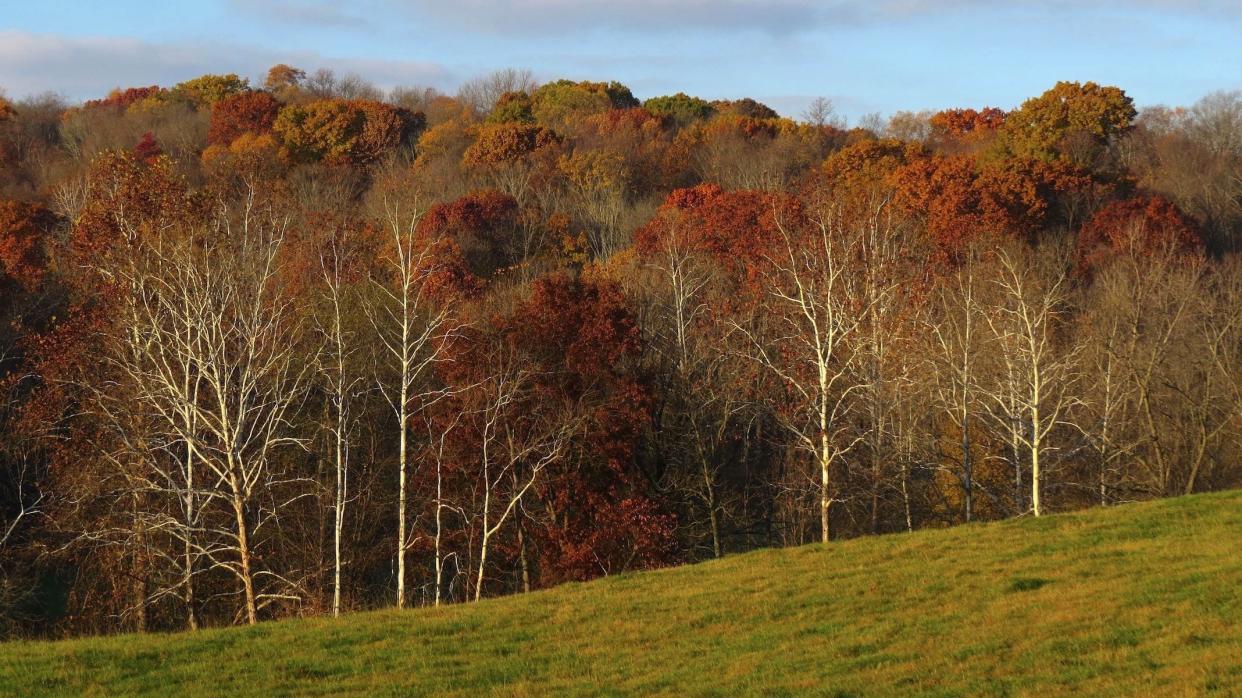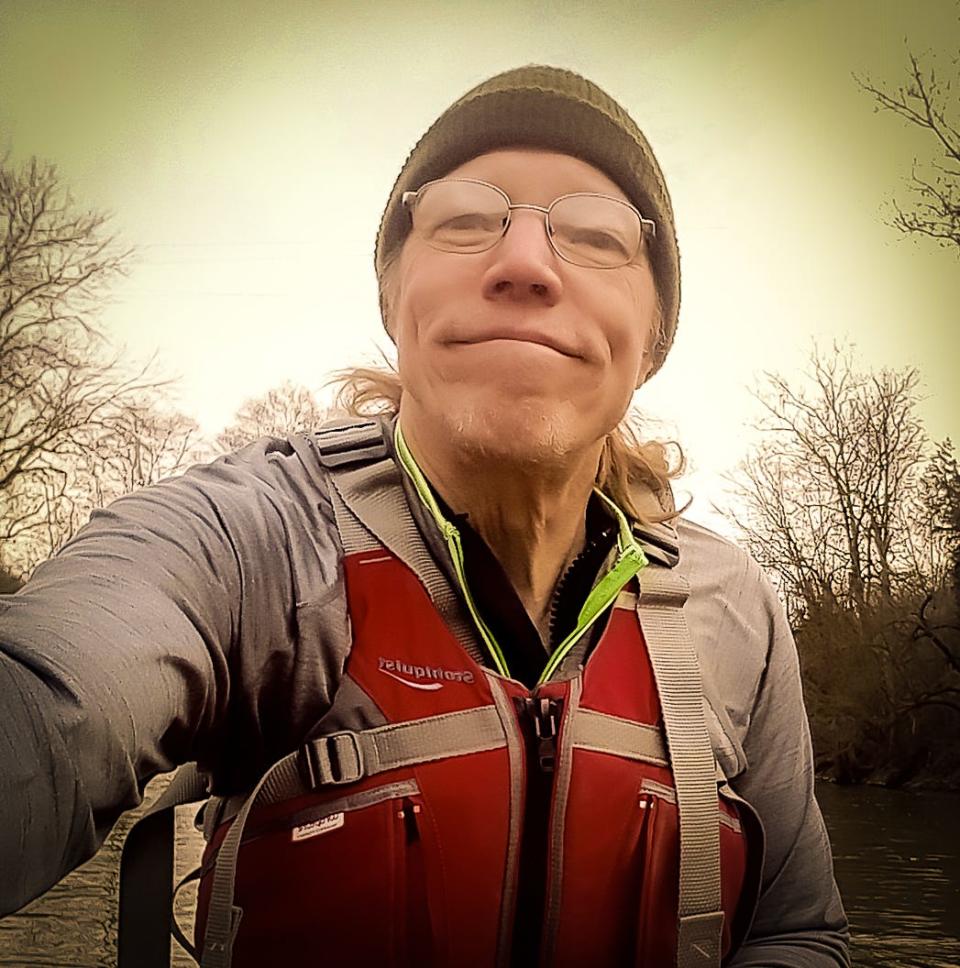Irv Oslin: Not all who wander are lost — until they follow ‘Sycamore’

Call me Sycamore. Because Ishmael’s been taken.
Ishmael and I do have a few things in common — a feeling of being outcasts, drifting through life. And, like Ishmael, in difficult times I find refuge on the water.
More: Irv Oslin: Healing a broken landscape and broken spirits one step at a time
Sycamore would be a more fitting name. If, for no other reason, by virtue of appearance. In his blog, conservationist Bobby Whitescarver said sycamore trees “stand guard along streams like the bones of giant wizards.” That’s pretty much how I look and feel while standing along the Mohican River early in the morning. Especially before my first cup of coffee.
Adorned in camouflage, with twisted bony limbs and arthritic fingers — I can see where some would mistake me for a sycamore. I suppose, if I stood in one place too long, squirrels and raccoons would climb me. Woodpeckers would probe my skull for larvae.

Appearance aside, the American sycamore and I have another trait in common, leading people to water.
I found this in the Lewisboro Field Guide: “In winter when the leaves have fallen, the entire tree appears white, leading Native Americans to call it the "Ghost Tree." Because it grows along stream banks and stands out so clearly in winter, it is a useful guide to finding water sources.”
Sycamores point the way to streams throughout the year
Sycamores continue to point the way to streams well into the spring and early summer. When it comes to developing foliage, sycamores are in no particular hurry. That’s another trait we share — going through life with no sense of urgency.
As indicated in a previous column — the one about providing a misguided tour of the Walhonding and Muskingum rivers for the Simpkins family — I enjoy leading people to water. Have been for more than three decades.
I inherited that role from the late Bob Hallisy and a few other friends who first talked me into going canoeing on the Mohican River 42 years ago. I was in a dark place then. Urbanized. Nihilistic. An angry young man with a lingering case of acne and a ’72 Ford Torino that smelled like old people with leaky Depends.
The latter ceased to be a problem after I found and eliminated the source — a rusted can of Coleman fuel concealed in a recess of the Torino’s three-body trunk. As for the other issues, those all went away when I settled into the seat of a canoe for the first time in my life.
The experience transformed me. I was no longer urbanized, nihilistic and mad at the world. Although I still get an occasional pimple.
Organized 'Just Around the Bend Canoe Trips'
Somewhere along the line Bob Hallisy passed the torch to me. From the late ’80s on, I became the chief instigator of canoe trips. That morphed into organizing group canoe camping trips through Hoot, a humor tabloid I published in Columbus. Those excursions, dubbed “Just Around the Bend Canoe Trips,” attracted a colorful cast of characters.
The phrase “Just Around the Bend” was a common response to anyone asking how far it was to our campsite. It could mean anything from literally just around the bend to several miles. Usually the latter. Often to the chagrin of the poor tired sap asking how much longer we had to paddle.
As for the cast of characters, they ran the gamut from an improvisational comedy troupe to two college professors who had discovered a newspaper coupon scheme. Apparently, the advertiser had neglected to limit the number of coupons that could be redeemed for free soft drinks. The professors amassed hundreds of coupons by collecting bundles of unsold newspapers. They’d barter their ill-gotten soda pop for all sorts of things, including the price of a three-day canoe rental.
So, there you have it. Feel free to call me Sycamore. If you’re one of those poor saps asking how far we have to paddle to our campsite, I’m sure you’ll think of a few more choice names.
This article originally appeared on Ashland Times Gazette: Irv Oslin: Not all who wander are lost — until they follow ‘Sycamore’

